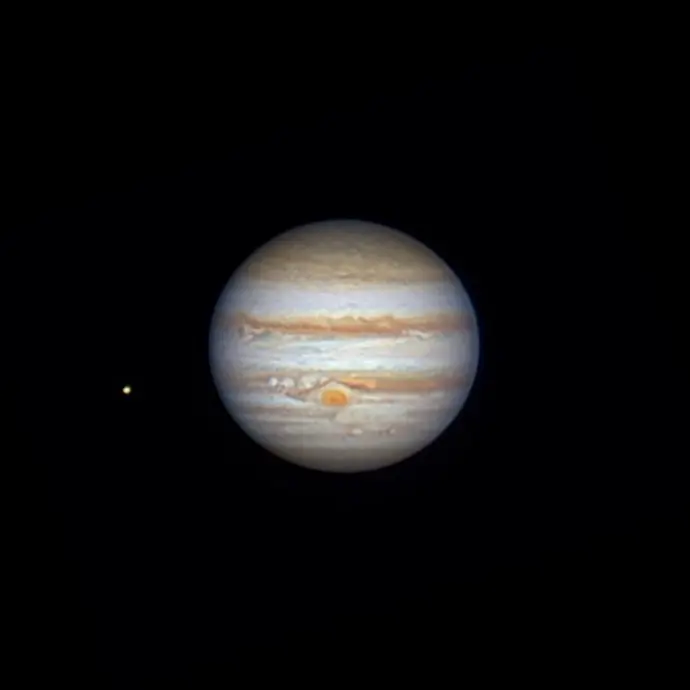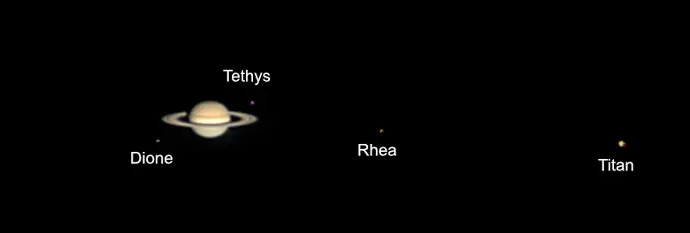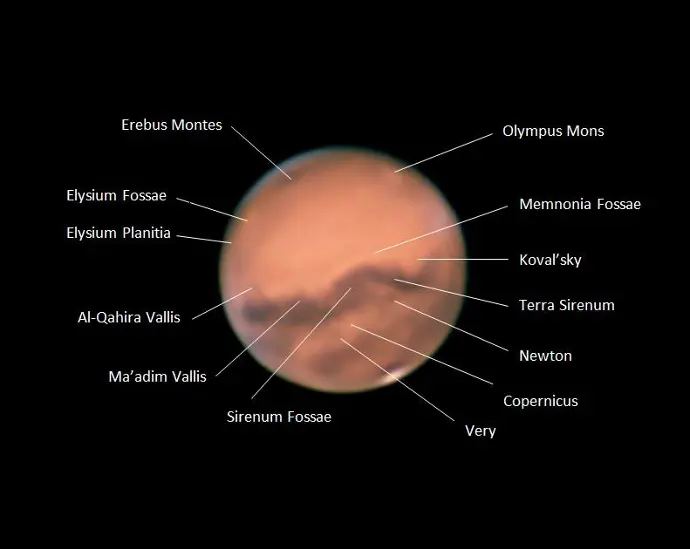Solar System

Jupiter and Europa
8" Celestron SCT, x2 Barlow, ADC, UV/IR cut filter, ZWO 224mc.
Best 25% of 35000 frames stacked in Autostakkert 3, waveletts in Registax 6 and colour in Affinity Photo.
By John Press.
Saturn and Moons
This is a composite of 2 images, one set of stacks for the planet and a second for the moons. These were then blended to show both.
8" Celestron SCT, ADC, UV/IR cut filter, Zwo 224mc. Best 25% of 17000 images stacked in Autostakkert 3, waveletts in Registax 6 and processing in Affinity Photo.
By John Press


Jupiter
This image was a result of stacking 7 individual, already stacked videos. Each video was 2 minutes long and comprised around 30000 frames each. The best 25% of each video was stacked to make a single image. This meant that there were around 14 minutes between the start of the first video and end of the last.
Jupiter's day is just over 9 hours long. This means that in the 14 minutes of video the planet would have noticeably rotated and stacking the 7 images would have resulted in a blur. Instead all 7 images were added together by a process known as derotating (by a program called Winjupos).
This resulted in more detail than a single shot. However, that is not the whole story. In Britain we live under the jet stream and often our skies are turbulent which causes our images to blur. Occasionally we get a patch of still air where we can capture some highly detailed pictures. On this night there were about 25 minutes where the atmosphere settled to allow a capture of some decent data for a change.
By John Press.

Mars
Even in relatively small telescopes, it is possible to identify features on the surface of Mars. The north and south polar caps are easily picked out.
8" Celestron SCT, x2 Barlow, ADC, Zwo 224mc. Best 25% of 17000 frames stacked in Autostakkert 2, waveletts in Registax 6, colour and annotation in Affinity Photo.
By John Press.